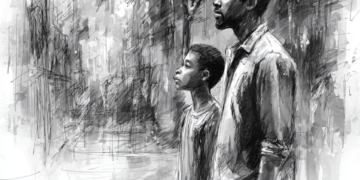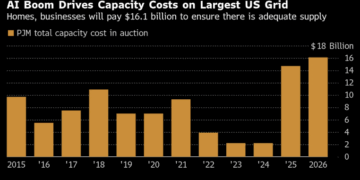President Trump has signed the One Big Beautiful Bill Act into law, and I want to walk you through what this comprehensive legislation actually means for Americans. This massive bill is divided into 10 titles, each addressing different aspects of government and policy. Today, I’m focusing on Title 2, which deals with the Committee on Armed Services and represents one of the largest defense spending initiatives in recent memory.
The Scale of Investment
Title 2 alone appropriates over $150 billion in additional defense funding through fiscal year 2029. To put this in perspective, this represents a substantial increase in defense capabilities across virtually every domain of military operations. The funding comes from “any money in the Treasury not otherwise appropriated,” meaning these are new expenditures beyond the regular defense budget.
Military Personnel and Quality of Life Improvements
The Act prioritizes the wellbeing of our service members and their families through $7.3 billion in quality of life enhancements. This includes $2.9 billion to supplement basic housing allowances, addressing the longstanding challenge of military housing costs that often exceed current allowances. Military families will see direct benefits through $100 million in additional child care fee assistance and $100 million in expanded tuition assistance programs.
The legislation also addresses military spouse employment challenges with $10 million for professional licensure support, helping spouses maintain their careers despite frequent relocations. Additionally, $590 million will extend temporary lodging expense allowances to 21 days, providing more flexibility during military moves.
Naval and Maritime Capabilities
Perhaps the most significant investment comes in naval capabilities, with $28.3 billion allocated to shipbuilding and maritime operations. This includes $4.6 billion for a second Virginia-class submarine in fiscal year 2026 and $5.4 billion for two additional guided missile destroyers. The Act also invests heavily in the shipbuilding industrial base itself, with funding for steel production, manufacturing techniques, and workforce development.
The maritime focus extends to unmanned systems, with $1.5 billion for small unmanned surface vessels and $2.1 billion for medium unmanned surface vessels. This represents a major shift toward autonomous naval capabilities that could reshape how the Navy operates in contested waters.
Missile Defense and Space Capabilities
Air and missile defense receives $24.4 billion, with particular emphasis on space-based capabilities. The Act allocates $7.2 billion for military space-based sensors and $5.6 billion for space-based intercept capabilities. This investment addresses growing threats from hypersonic weapons and ballistic missiles, with $2.2 billion specifically for hypersonic defense systems.
The space domain receives additional attention through $3.65 billion for military satellites and satellite protection, recognizing that modern warfare increasingly depends on space-based assets for communications, navigation, and intelligence.
Munitions and Supply Chain Resilience
The Act addresses ammunition and weapons production through $23.8 billion in munitions-related funding. This includes $1 billion for next-generation automated munitions factories and substantial investments in missile production capacity. The legislation also tackles supply chain vulnerabilities with $2 billion for critical minerals stockpiling and $8.3 billion in additional Industrial Base Fund investments.
These investments aim to reduce dependence on foreign suppliers for critical defense materials and ensure adequate munitions stockpiles for potential conflicts.
Emerging Technologies and Innovation
Innovation receives $15.6 billion through various programs designed to accelerate new military technologies. This includes $2 billion for Defense Innovation Unit scaling programs and $1.4 billion for small unmanned aerial systems. The Act also invests $1.69 billion in military cryptographic modernization, addressing cybersecurity concerns across defense systems.
Artificial intelligence development receives substantial funding through multiple programs, recognizing its potential to transform military operations from logistics to combat systems.
Nuclear Modernization
Nuclear forces receive $14.9 billion in additional funding, with $4.5 billion specifically for expanding B-21 bomber production capacity. The Act also accelerates development of the nuclear-armed sea-launched cruise missile with $2 billion in funding and invests $2.5 billion in the Sentinel intercontinental ballistic missile program.
This nuclear modernization effort represents the largest investment in nuclear capabilities in decades, reflecting concerns about strategic competition with peer adversaries.
Indo-Pacific Focus
Recognizing the strategic importance of the Indo-Pacific region, the Act allocates $12.9 billion specifically for operations and capabilities in that theater. This includes $1.1 billion for infrastructure development and $1 billion for offensive cyber operations. The legislation also funds $1 billion for the X-37B military spacecraft program, suggesting expanded military space operations.
Readiness and Maintenance
Military readiness receives $19.1 billion through depot modernization, equipment maintenance, and spare parts procurement. This includes $2.5 billion for Air Force facilities and $2 billion for Navy shipyard modernization. The Act also provides $1.5 billion for increased depot maintenance activities across all services.
Border Security and Counter-Drug Operations
The legislation includes $1 billion for military support to border operations and counter-narcotics missions. This funding supports deployment of military personnel for border security, operation of national defense areas, and counter-transnational criminal organization activities.
Implementation and Oversight
The Act includes oversight provisions through $10 million for the Defense Department Inspector General to monitor these programs, particularly focusing on supply chain vulnerabilities and technological dependencies.
What This Means for Americans
This massive defense investment reflects a strategic pivot toward great power competition, with particular attention to the Indo-Pacific region and emerging technologies. The emphasis on industrial base strengthening suggests a long-term commitment to rebuilding American defense manufacturing capabilities.
For military families, the quality of life improvements should provide tangible benefits in housing, education, and child care. For the broader economy, the industrial base investments could create significant manufacturing jobs, particularly in shipbuilding, munitions production, and advanced manufacturing.
The scale of this investment represents a fundamental shift in defense priorities, with implications that will extend well beyond the current administration. As these programs roll out over the next five years, they will likely reshape both military capabilities and the defense industrial base in ways that will influence American security posture for decades to come.
The One Big Beautiful Bill Act’s Title 2 represents more than just defense spending – it’s a comprehensive strategy for maintaining American military superiority in an increasingly complex and contested global environment.
Also check out Understanding Title I of the One Big Beautiful Bill Act: What These Agricultural and Nutrition Changes Mean for You.

















































